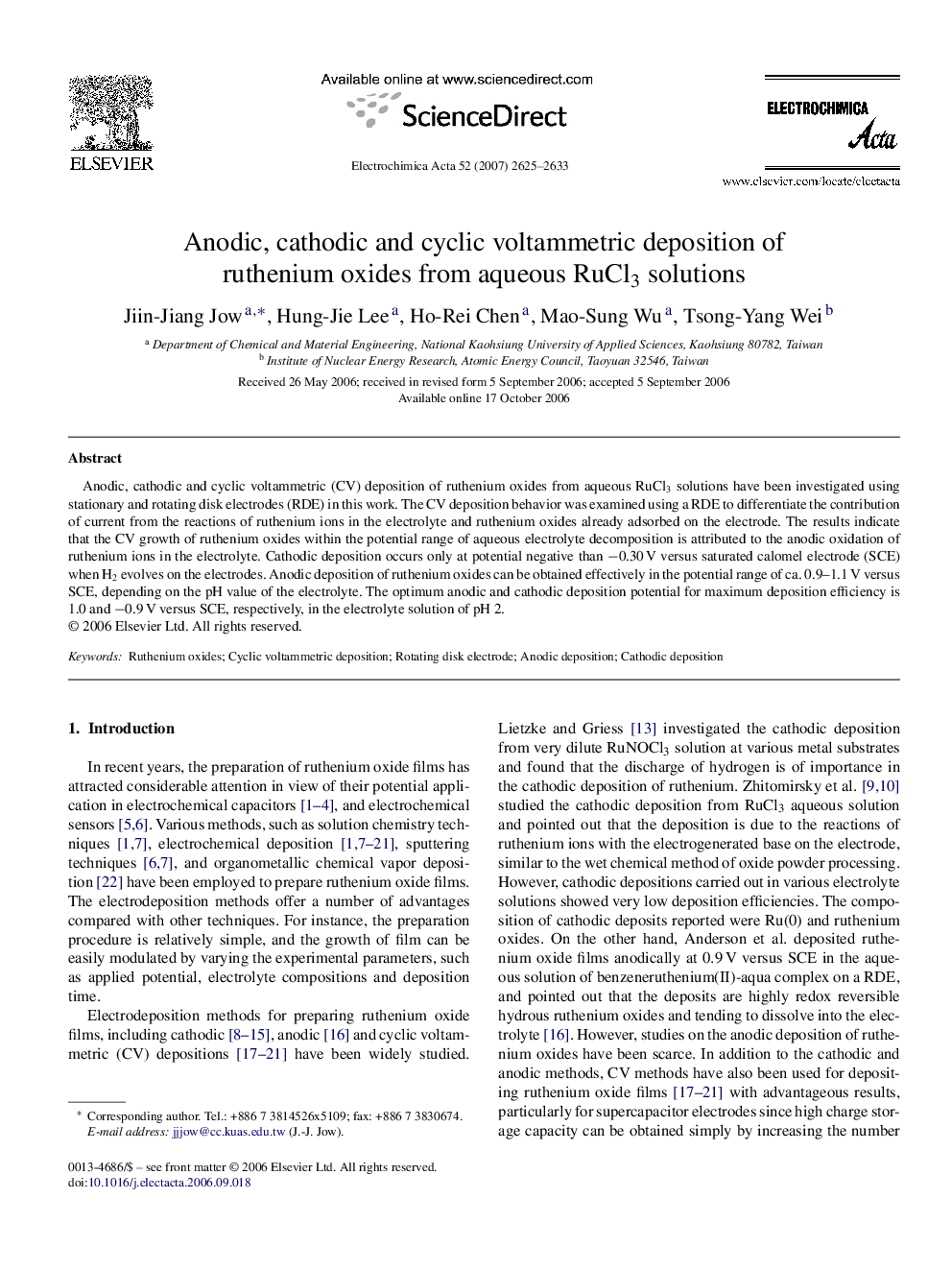| Article ID | Journal | Published Year | Pages | File Type |
|---|---|---|---|---|
| 194915 | Electrochimica Acta | 2007 | 9 Pages |
Anodic, cathodic and cyclic voltammetric (CV) deposition of ruthenium oxides from aqueous RuCl3 solutions have been investigated using stationary and rotating disk electrodes (RDE) in this work. The CV deposition behavior was examined using a RDE to differentiate the contribution of current from the reactions of ruthenium ions in the electrolyte and ruthenium oxides already adsorbed on the electrode. The results indicate that the CV growth of ruthenium oxides within the potential range of aqueous electrolyte decomposition is attributed to the anodic oxidation of ruthenium ions in the electrolyte. Cathodic deposition occurs only at potential negative than −0.30 V versus saturated calomel electrode (SCE) when H2 evolves on the electrodes. Anodic deposition of ruthenium oxides can be obtained effectively in the potential range of ca. 0.9–1.1 V versus SCE, depending on the pH value of the electrolyte. The optimum anodic and cathodic deposition potential for maximum deposition efficiency is 1.0 and −0.9 V versus SCE, respectively, in the electrolyte solution of pH 2.
